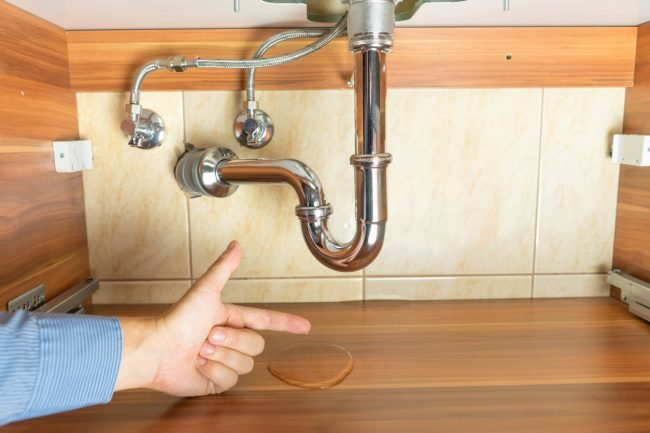Leaks are one of the most common home plumbing problems, and they can also be some of the most frustrating plumbing challenges to navigate. It is oftentimes difficult to detect leaks at home before it causes significant water damage inside and/or outside your house.
It is important to check your home plumbing system for leaks seasonally in order to prevent any potential leak from causing major water damage before you discover it. Summer is one of the most crucial times to inspect your home for leaks because the weather during the coldest months of the year can have a major impact on your home’s plumbing system and lead to water leaks.
If you’re not sure where or how to inspect for water leaks in your home, keep reading to find out more about some of the most common sources of home water leaks and how to detect any water leak in your home.
1. The Toilet
One of the easiest ways to detect a water leak that stems from your toilet is to put a few drops of food coloring in the tank of the toilet and wait an hour or two. Do not flush your toilet during this time. If the colored water leaks from the tank into the bowl of your toilet, that’s a sign that your toilet likely has a water leak. Also, pay attention if your toilet is running when it should not be because a running toilet can be a sign of a water leak stemming from the toilet’s floater valve.
Keep in mind that various parts of your toilet wear out over time and need to be replaced. If you notice that any of the seals around your toilet seem loose or any parts seem worn out, call a professional plumber to come to replace any faulty parts for you to prevent future water leaks.
2. The Water Heater
Inspecting your water heater for leaks is very simple. Check all of the hardware around the water heater and all of the pipes that connect to your water heater for rust and corrosion—which are both signs of a water leak. Also, slide your hand beneath the base of the water heater to make sure that area is dry—if it is wet, that also signifies that your water heater is likely leaking.
To prevent water heater leaks and keep your water heater in great condition for as long as possible, clean the hardware around your water heater regularly to prevent sediment buildup. Also, remember that water heaters should be replaced every 10 to 15 years, so it’s important to keep track of how long you have had your water heater and replace it when needed.
3. The Bathtub
Bathtub leaks can be difficult to detect but can cause major water damage in your home. When inspecting your bathtub for leaks, first check whether the grout is secured to the wall If the seal is loose or detached, your bathtub might be leaking.
Also, put gentle pressure on the walls and flooring around the sides of your bathtub. If you encounter a spongy texture, that may indicate a leak that has caused water damage in the flooring or walls of your bathroom.
4. The Sink
Check the pipes underneath your sink while you are inspecting your home for water leaks. If you notice any rust or corrosion or if any of the parts of the pipe feels loose, the pipes under your sink are probably leaking.

leaking faucet
Also, turn on the faucet in your sink and look for water leaking out around the base of the faucet. If you notice a water leak around the base of your faucet, this signifies that a part inside your faucet has likely worn out and needs to be replaced.
5. The Full Water System
If you have inspected your toilet, water heater, bathtub, and sinks and have not discovered a leak, your next step in detecting and repairing a leak in your home is to check the water system in your home as a whole. This method is ideal for people who suspect a leak in their home but want to confirm there is actually a leak before calling in a professional plumber to detect and repair it.
Inspecting your home’s full water system for leaks is very simple. Go to your home’s water meter—which should be located somewhere around the exterior of your home—and check the numbers on the meter. Write the numbers down, then make sure that no one in your household uses any water-dependent appliances—including bathtubs, sinks, dishwashers, etc.—for the next hour or two. Once an hour or two has passed without any water used in your home, check the numbers on the water meter again. If the numbers are higher, that’s a telltale sign that there is a leak somewhere in your home plumbing system.


